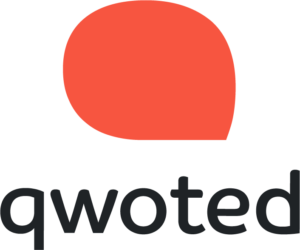Qwestion & Answer with Leonardo Castañeda, Reporter at The Mercury News
Qwoted is committed to exploring the current state of the media by speaking to industry leaders and educating future generations of media professionals. What has social media and technological innovation brought to the table? What can we expect for the future of journalism?

Leonardo Castañeda graduated from San Diego State University with a degree in journalism before working in investigative and accountability journalism for a nonprofit news organization in San Diego. After moving to the Bay Area, Castañeda now reports on small businesses, income inequality and demographics for The Mercury News. His passion lies in understanding and sharing how issues as broad as COVID-19 and unemployment rates truly go beyond the headlines and affect people. “It’s vital to provide accurate, insightful information…so citizens can make informed decisions about their county, city, and country,” Castañeda says. How to do that? “Improve the diversity of sources quoted in stories.”
Q: What advice would you give to aspiring young writers and reporters?
LC: Focus on developing an expertise beyond writing to broaden your understanding of concepts like economics, history, or political science. Widen your skill sets by picking up interests in data journalism or photography.
Q: Social media has upended the traditional media landscape. One of the great challenges it creates is authenticity and malevolent actors. How do think journalists and reporters should deal with the rising tide of misinformation?
LC: I think journalists need to be acutely aware of the ease of spreading misinformation or of misinterpreting accurate reporting on social media and build in workflows that try to limit that.
Q: What are some of the best practices from journalism’s past that you feel need to be utilized now?
LC: Talking to people one on one. So many errors or misinterpretations can be prevented by picking up the phone and calling the parties involved, instead of relying on crutches like social media. Even during the current pandemic, going out to do on the ground reporting (in a safe and responsible way) helps reveal that what was inferred from the comfort of our (home) offices is perhaps a fraction of the lived reality. Giving people space to tell us their stories directly is simply better journalism and in turn leads to more powerful stories.
Q: What do you see as some of journalism’s biggest potential pitfalls? And what gives you hope for the future of journalism?
LC: I think the ongoing financial challenges within the industry means journalists can’t cover everything we used to, and we risk as an industry misreporting or underreporting issues in an effort to do everything with shrinking resources. But the new generation of reporters are invigorating a sense of writing for the voiceless and approaching issues of equity, inclusion, inequality and more with nuanced, fresh eyes.
Q: Where do you get YOUR news from? Which publications do you like to read?
LC: I primarily seek out local sources. Besides The Mercury News and East Bay Times, I’m a subscriber to the San Francisco Chronicle and the Los Angeles Times. I’m a regular listener of KQED’s news broadcasts and podcasts, and I often go to independent weeklies and nonprofit news organizations like Mission Local and El Tecolote in San Francisco, the brand new Oaklandside in the East Bay, and San Jose Inside in the South Bay.
POPULAR POSTS
